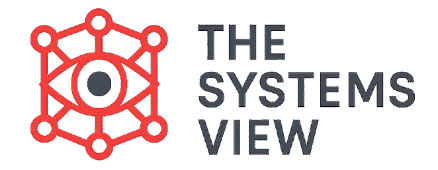What exactly do we mean by a “system”? A system is more than just a collection of parts. It is a group of parts that work together and depend on each other to create a single, unified whole. These parts can be physical, like people, tools, or machines. They can also be intangible, like ideas, policies, or the flow of information.
In a company, a research and development (R&D) team is a system. It has people, equipment, and processes that all work together. This system then connects with other systems, like the production team and the sales team. Your own body is also a system. Your circulatory system works with your nervous system and your digestive system to keep you alive.
Every system is a part of a larger system. Your R&D team is part of a company, which is part of an industry, which is part of the larger economy. All of your body’s systems are part of your body, which exists within a larger environment.
Systems vs. Collections
The difference between a system and a collection is a simple one. If you can add or remove pieces without changing how the whole thing works, you have a collection. For example, if you take a cashew out of a bowl of mixed nuts, nothing really changes. The bowl is still just a collection of nuts.
But if you change a part of an R&D team by changing a person’s role or a task, the entire group’s behavior will shift. This is because the group is a system, and its parts are all connected. The way the parts are arranged also matters. If you randomly swap the accounting team with the production team, the entire organization will stop working.
Key Features of a System
Every system has five key features that make it what it is.
- The Right Parts Are Needed: A system needs the right parts to function. If you remove or add parts, you change how the whole thing works. This is what makes a system different from just a random pile of things.
- Structure Matters: The way the parts are arranged is what determines how the system performs. Who does what, and how the parts connect, is very important.
- Every System Has a Purpose: A system has a purpose that fits into a larger system. You cannot split a system into identical smaller systems, and you cannot mash two systems together into a single new one. Each system has its own integrity within a bigger context.
- Systems Stay Stable: Systems use adjustments to keep a steady state. Your body holds its temperature near a certain level. A company works to balance its money coming in and money going out. Both systems will wobble a little but will always try to stay near their target.
- Systems Run on Feedback: Feedback is information that comes back and causes a system to correct itself. It is what happens when you steer a car through a curve. This feedback can be fast or very delayed. It often travels through other parts—or even other systems—before it gets back to where it started.
A great example of delayed feedback is a company doing layoffs. In the first few months, the company’s costs drop, and the financial numbers look better. Because of this fast feedback, the layoffs seem to be a success. But months later, the slow feedback shows up. Employee morale, quality, and sales can all drop. This can cause the organization to spiral into even more cuts. The fast feedback of saving money hid the slow feedback of damage to the company.
Looking Deeper: Events → Patterns → Structure
Our first thought is always to react to an event—like a missed deadline or a machine breaking. But fixing a single event does not work for long. This is because it does not change the real problem, which is the underlying system.
When you look for patterns over time—like trends in sales or employee turnover—you can put today’s event into context. The real power is in seeing the structure. This is the web of relationships and causes that create those patterns in the first place.
Important: The real leverage is in a system’s structure. When you change the structure, you change the pattern of behavior and the events that follow.
This is why Systems Thinking is so important in everyday work. When you see the system, you stop just putting out fires. You start to design better conditions. This could mean creating a better process for a task, clearer policies, or a more reliable way for information to flow. This is how you get results that last.
Frequently Asked Questions (FAQs)
1. What is the difference between an element and a system?
An element is a single part of a system. A system is made up of many elements that are all connected and work together to achieve a purpose. For example, a single tire on a car is an element, but the car itself is a system.
2. How can I start to see systems in my daily life?
The easiest way to start is to look for feedback loops. When you see a problem that keeps happening or a trend that keeps growing, ask yourself, “What is causing this, and how does that cause then affect the original problem?” This will help you see the circular relationships that are at the heart of every system.
3. Why is it so important to look at “structure” instead of just “events”?
Focusing on events is like only treating the symptoms of a sickness. You might feel better for a moment, but the sickness will come back because you haven’t fixed the real problem. Structure is the root cause of the problem. By changing the structure, you can fix the problem for good and prevent the same events from happening again.
4. Can a system be both natural and human-made?
Yes. A company, a car, and a computer network are all human-made systems. A forest, a river, and the human body are natural systems. It is important to know that these systems can also interact with each other. For example, a farming system (human-made) interacts with a local ecosystem (natural).
5. Does every system have a purpose?
Yes. Every system is organized for a specific purpose, whether that purpose is to make a car, to keep a body alive, or to maintain a healthy ecosystem. The purpose of a system is always defined by the role it plays within a larger system. For example, the purpose of a heart is to pump blood, which is a role it plays within the larger system of the body.
Conclusion
A system is not just a collection of parts. It is a set of parts organized for a purpose. It is kept stable by feedback and is always a part of larger systems. If you want a lasting solution to a problem, do not just react to events. Study the patterns and change the structure. This is the main idea of Systems Thinking, and it is the path to smarter, longer-lasting decisions.



